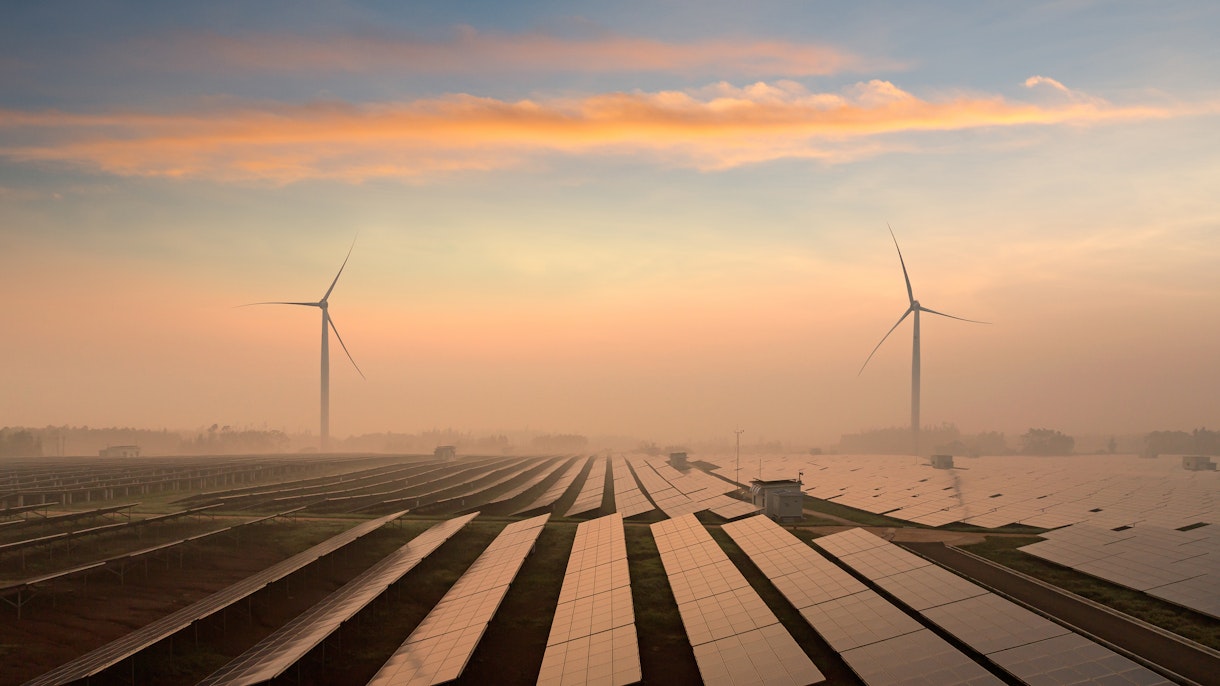Renewable power on course to shatter more records as countries around the world speed up deployment
News

With the global energy crisis as a catalyst, solar PV and wind are set to lead the largest annual increase in new renewable capacity ever, new IEA report shows
Global additions of renewable power capacity are expected to jump by a third this year as growing policy momentum, higher fossil fuel prices and energy security concerns drive strong deployment of solar PV and wind power, according to the latest update from the International Energy Agency.
The growth is set to continue next year with the world’s total renewable electricity capacity rising to 4 500 gigawatts (GW), equal to the total power output of China and the United States combined, says the IEA’s new Renewable Energy Market Update, which was published today.
Global renewable capacity additions are set to soar by 107 gigawatts (GW), the largest absolute increase ever, to more than 440 GW in 2023. The dynamic expansion is taking place across the world’s major markets. Renewables are at the forefront of Europe’s response to the energy crisis, accelerating their growth there. New policy measures are also helping drive significant increases in the United States and India over the next two years. China, meanwhile, is consolidating its leading position and is set to account for almost 55% of global additions of renewable power capacity in both 2023 and 2024.
“Solar and wind are leading the rapid expansion of the new global energy economy. This year, the world is set to add a record-breaking amount of renewables to electricity systems – more than the total power capacity of Germany and Spain combined,” said IEA Executive Director Fatih Birol. “The global energy crisis has shown renewables are critical for making energy supplies not just cleaner but also more secure and affordable – and governments are responding with efforts to deploy them faster. But achieving stronger growth means addressing some key challenges. Policies need to adapt to changing market conditions, and we need to upgrade and expand power grids to ensure we can take full advantage of solar and wind’s huge potential.”
Solar PV additions will account for two-thirds of this year’s increase in renewable power capacity and are expected to keep growing in 2024, according to the new report. The expansion of large-scale solar PV plants is being accompanied by the growth of smaller systems. Higher electricity prices are stimulating faster growth of rooftop solar PV, which is empowering consumers to slash their energy bills.
At the same time, manufacturing capacity for all solar PV production segments is expected to more than double to 1 000 GW by 2024, led by China and increasing supply diversification in the United States, India and Europe. Based on those trends, the world will have enough solar PV manufacturing capacity in 2030 to comfortably meet the level of annual demand envisaged in the IEA’s Net Zero Emissions by 2050 Scenario.
Wind power additions are forecast to rebound sharply in 2023 growing by almost 70% year-on-year after a difficult couple of years in which growth was slugging. The faster growth is mainly due to the completion of projects that had been delayed by Covid-19 restrictions in China and by supply chain issues in Europe and the United States. However, further growth in 2024 will depend on whether governments can provide greater policy support to address challenges in terms of permitting and auction design. In contrast to solar PV, wind turbine supply chains are not growing fast enough to match accelerating demand over the medium-term. This is mainly due to rising commodity prices and supply chain challenges, which are reducing the profitability of manufacturers.
The forecast for renewable capacity additions in Europe has been revised upwards by 40% from before Russia’s invasion of Ukraine, which led many countries to boost solar and wind uptake to reduce their reliance on Russian natural gas. The growth is driven by high electricity prices that have made small-scale rooftop solar PV systems more financially attractive and by increased policy support in key European markets, especially in Germany, Italy and the Netherlands.
Newly installed solar PV and wind capacity is estimated to have saved EU electricity consumers EUR 100 billion during 2021-2023 by displacing more expensive fossil fuel generation. Wholesale electricity prices in Europe would have been 8% higher in 2022 without the additional renewable capacity, according to the new IEA report.
While the competitiveness of wind and solar PV has improved since last year, government policies need to adapt to changing market conditions, particularly for renewable energy auctions, which were undersubscribed by a record 16% in 2022. Moreover, policies need to focus on timely planning and investment in grids in order to securely and cost-effectively integrate high shares of variable renewables in power systems. Multiple countries in Europe including Spain, Germany and Ireland will see wind and solar PV’s combined share of their overall annual electricity generation rise above 40% by 2024.